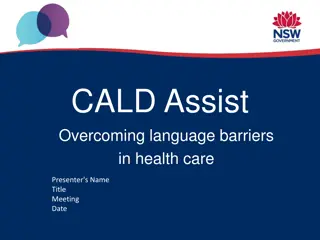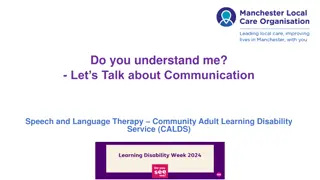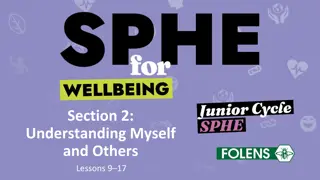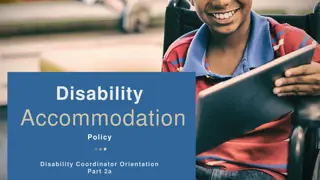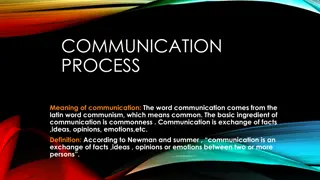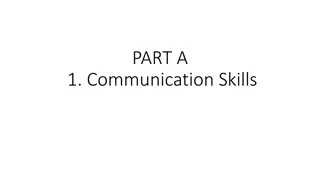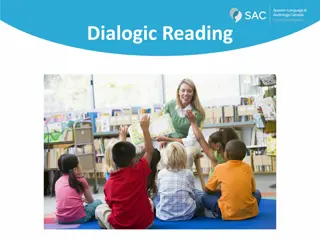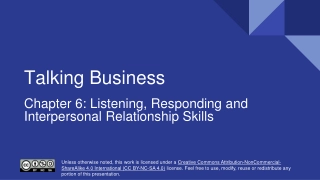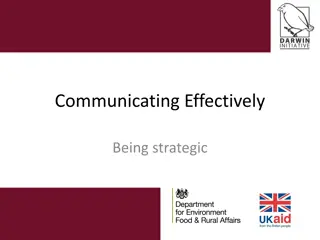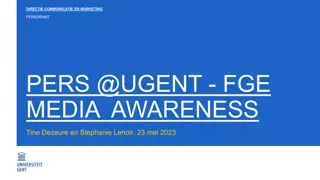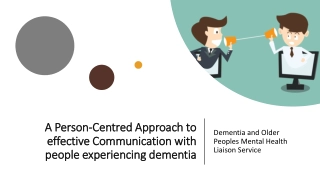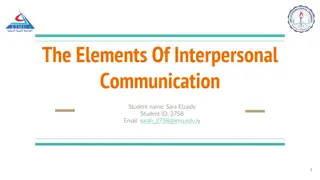Language and Communication in Society: Understanding Interactions
Explore the intricate relationship between language and society through lectures focusing on language in interaction, power dynamics, language contact and change, public space discourse, linguistic landscaping, and more. Delve into the shift from structural linguistics to societal communication, redefining language competence as appropriate usage in various social contexts. Discover the nuances between denotational and indexical language through engaging video examples.
Download Presentation
Please find below an Image/Link to download the presentation.
The content on the website is provided AS IS for your information and personal use only. It may not be sold, licensed, or shared on other websites without obtaining consent from the author. Download presentation by click this link. If you encounter any issues during the download, it is possible that the publisher has removed the file from their server.
Presentation Transcript
Introduction to Linguistics Lecture 7: PART 2 - LANGUAGE and COMMUNICATION in Society: Language and Interaction
Schedule the following few weeks Start with PART 2: Language and Society/Communication Lecture 7: Language in interaction Lecture 8: Language and power, language and gender (Mesthrie et. al Chapter 8) Lecture 9: Language Contact and change: Maintenance, shift and death (Chapter 8 book + Mesthrie et al. Chapter 9) Lecture 10: Language in the PUBLIC SPACE: Language Planning and policy Lecture 11: Language in the PUBLIC SPACE: Linguistic Landscaping (+ Homework/Exam work) Lecture 12: Language in the PUBLIC SPACE: Linguistic Landscaping + Homework (in class preparation)
Schedule today Get back your exam give back my books (Prishtina group 1) Start with L7: 1. Introduction 2. Language in Interaction: A. Silence and speaking B. The politeness model
1. Introduction: Language and Linguistics So far, we have looked at structural linguistics From now on, we re going to look at language and communication in society Material used: - Slides - Book (Introduction to Linguistics) - Uploaded chapters on e-service from Mesthrie et. al. 2006
1. Introduction: Language and Linguistics Chomsky (1960s): ABSTRACT language away from the context in which it is spoken What we get is a SOCIAL MONSTER
1. Introduction: Language and Linguistics Now (2015): Language as it functions in SOCIETY based on human communication So: a redefinition of COMPETENCE as being: our ability to use language appropriately in different settings (Dell Hymes 1974) In other words: interest does not only lie in the production of sentences, but in socially-bound aspects like when is it appropriate to talk? When to remain silent? Etc
1. Introduction: Relationship between language and society (A) Denotational language vs. (B) Indexical language Video examples A. https://www.youtube.com/watch?v=Z9PBtnnPmL Q B. https://www.youtube.com/watch?v=RxV3P1bFGUU QUESTION: What s the difference between A and B?
1. Introduction: Relationship between language and society Denotationallanguage: a term which refers to the process of conveying meaning, referring to ideas, events or entities that exist outside of language Indexicallanguage: when using denotational language, it will be indexical of one s social class status, region of origin, gender, age group and so on.. = LANGUAGE AS A SOCIAL CONSTRUCT
2. Language in interaction HOW DO SPEAKERS USE LANGUAGE IN INTERACTION WITH OTHERS?
2. Language in interaction What do we look at? Ways of speaking as evident in different communities: Example: https://www.youtube.com/watch?v=aNBsyxcKDCI
2. Language in interaction Ways of speaking as evident in different communities: - The identification of differences between high- or low- status speakers, or between children and adults, or between the types of language used in different contexts: - A focus on the analysis of naturally occurring speech - Emphasis on the context in which speech is produced - Interest in the meanings or functions of language - Role of language in managing relationships between speakers
2. Language in interaction: exercise Analyze Liki and the men in Stupcat: - Is Liki a high or low status speaker? - Are the men high or low status speakers? - What is the context in which speech is produced? (Where are they?) - In what way does the language use of Liki change when he discovers that the men are from Pristina?
2. Language in interaction: A. Speaking and silence CAN WE STUDY SILENCE?
2. Language in interaction: A. Speaking and silence Silence is an aspect of human communication The focus is not on silence as an absence of speech, but as something that has communicative meaning alongside speech. There are differences in speaking practices between different groups not every culture interacts the same, and these differences often have a cultural basis Examples: 1, 2 and 3
Example 1 Silence: South- Athapaskan (Arizona) Silent culture
Example 1 Silence: South- Athapaskan (Arizona) One time, I was with A, B and X down working cattle. That man, X, was from East Fork where B s wife was from. But he didn t know A, never knew him before, I guess. First day, I worked with X. At night, when we were camped, we talked with B, but X and A didn t say anything to each other. Same way, the second day. Same way, third. Then, at night on fourth day, we were sitting by the fire. Still, X and A didn t talk. Then A said: Well, I know there is a stranger to me here, but I ve been watching him and I know he is alright. After that, X and A talked a lot .Those two men didn t know each other so they took it easy at first.
Example 1 Silence: South- Athapaskan (Arizona) In their culture, it is not common practice to introduce strangers to each other. Eventually, strangers will begin to talk, but they won t rush it. Other cultures might expect different behavior in such circumstances to get to know each other (Western Cultures, Albanian culture)
Example 2 Silence: Finnish Culture (Hame people from the south-West of Finland) Silent culture The hame brothers
Example 3 Silence as .MARKED vs. UNMARKED ?
Example 3 Silence as marked behavior (IGBO people in Nigeria) Silence as Marked
Example 3 Silence as marked behavior (IGBO people in Nigeria) ebullient loquacity: silence is an important form of behavior, meaningful because it contrasts with the more TALKATIVE norm of the IGBO PEOPLE. It is used to: A. Manage highly-charged situations and relationships (anger) B. To reject a marriage proposal
So in other words Example A and B Silence is UNMARKED = silence is considered as the norm (we call them silent cultures ) Example C Silence is MARKED in ebullient loquacity (talkative, cheerful, full of energy state of speaking)
Soin some other words SILENCE = POLITE in A and B SILENCE = IMPOLITE in C, unless in the situations stated above This brings us to: THE STUDY OF POLITENESS THEORY
2. Language in interaction: B. Politeness theory ME T SHKU FTYRA
2. Language in interaction: B. Politeness theory Created by Brown and Levinson (1987) The politeness theory (= study of politeness in communication) is based on the notion of FACE FACE = a person s public self-image There are two aspects of FACE: positive and negative face
B. Politeness theory: Positive vs. Negative face Positive face is our desire to be appreciated by others. Negative face is our desire not to be imposed by others. Now, when you know this; In interacting, speakers need to balance a concern for other people s face with a desire to protect their own. So speakers will draw on politeness strategies as a means of paying attention to another person s face and avoiding face-threatening acts
B. Politeness theory: Politeness strategies positive and negative BALD ON strategy Positive strategies: involve the expression of friendliness or approval (example: explicitly including someone in a conversation) Negative politeness strategies: involves not imposing on others or threatening their face (example: Could you possible shut the door?) Off the record politeness strategies See handout with exercises
Politeness Depends on region and culture (see examples A, B and C of silence) Social class (high class low class) Gender and power next week






